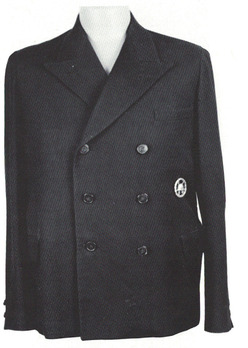DAF Festive Suitcoat
SKU: 81.GOR.02.01.001
Estimated market value:

Estimated market value:
Attributes
History
The DAF (Deutsche Arbeitsfront = German Labour Front) was the result of a forced association of all German trade unions, established on May 10, 1933. Its purpose was the coordination and control of all aspects of German labour to serve the interests of the NSDAP. The DAF leader was Reichsleiter Robert Ley.
The Werkscharen (Factory Brigades) of the DAF were the “soldiers” of the organisation, formed in 1934. They were trained and organised as paramilitary, uniformed units, yet remained unarmed. Beginning in April 1937, active Werkschar units (Stoßtrupps) would wear silver-coloured insignia, while administrators wore gold-coloured insignia. Even though Werkscharen were not affiliated with the Reichsluftschutzbund (RLB, National Air Raid Protection League), during the war they often functioned as factory air raid protection auxiliaries.
Some companies, especially major corporations, used additional security personnel, which were dubbed Werkschutz (Factory Protection), and later Werksicherheitsdienst (Factory Security Service).
Usually, DAF members wore individual working clothes. A uniform was only worn for special occasions (like Labour Day). It was a privately purchased festive uniform (Festanzug).
The Festive Suitcoat (Sakko) is a dark blue double-breasted jacket with two rows of three black buttons. It has two concealed hip pockets with a straight edge unbuttoned flap and a single concealed angular breast pocket on the left side. There are also two interior breast pockets. The suitcoat has no cuffs, but two small black buttons each at the ends of the sleeves.

Versions
N/A


Comments
Sign in to comment and reply.


Scroll Top